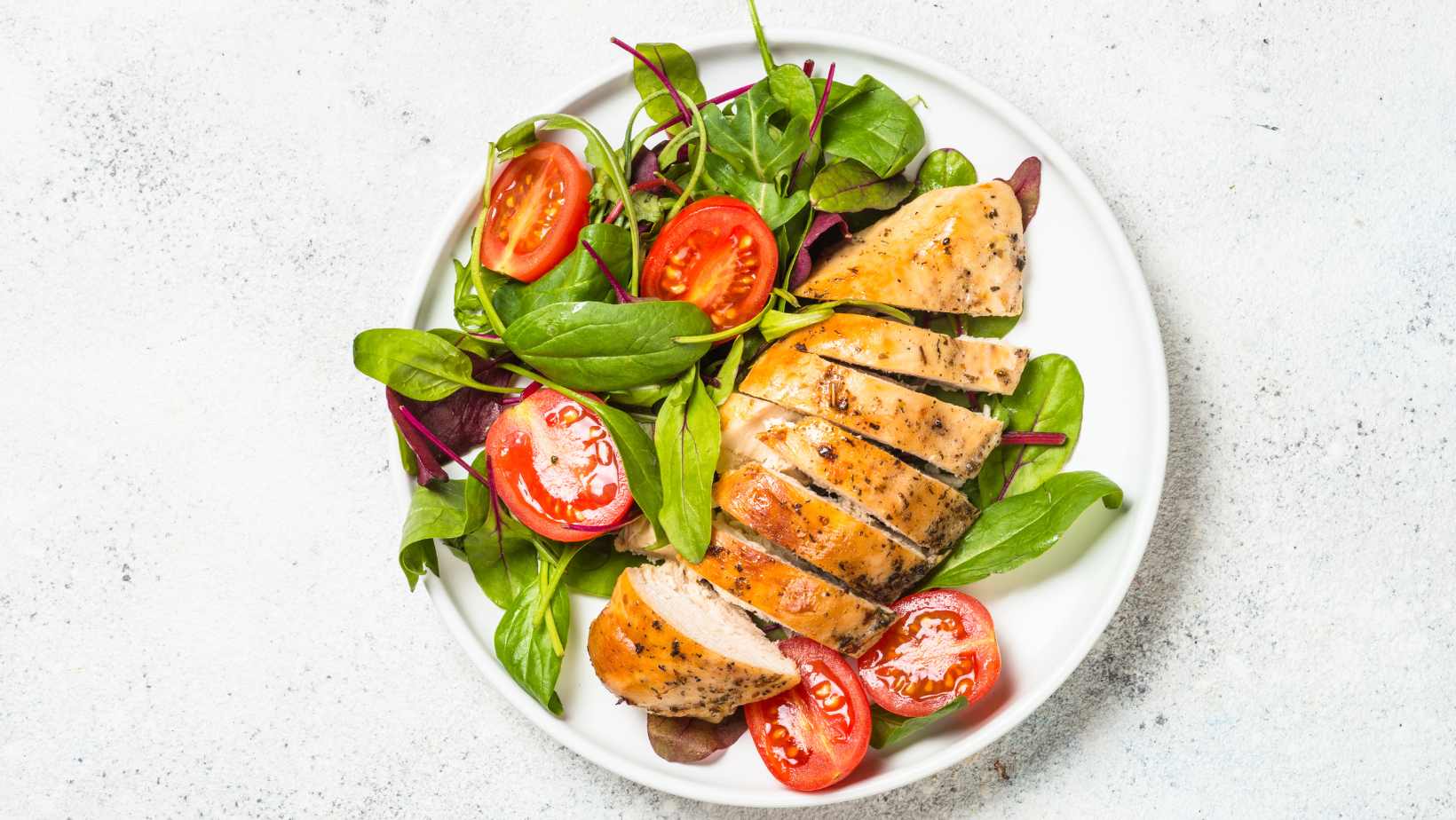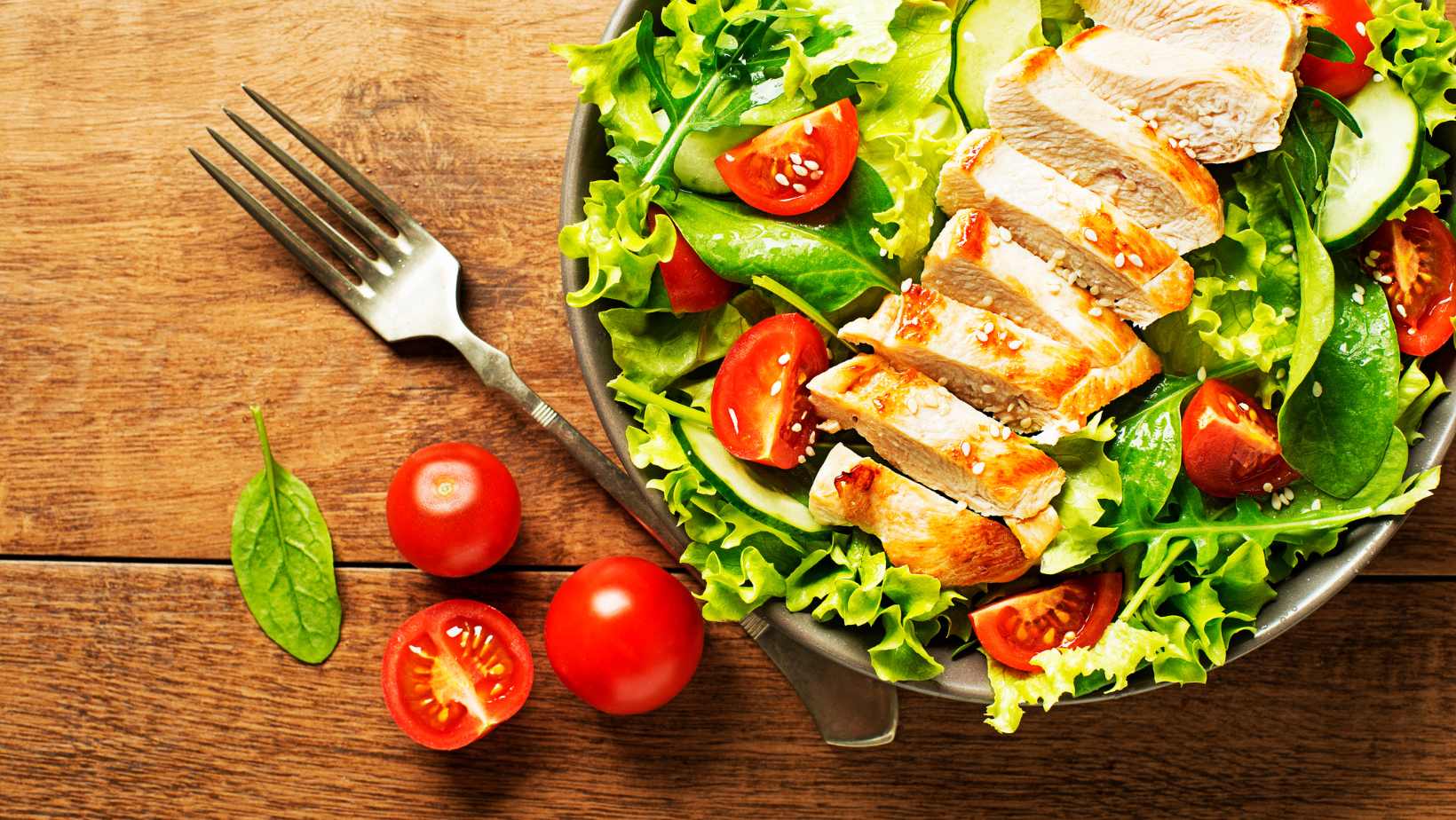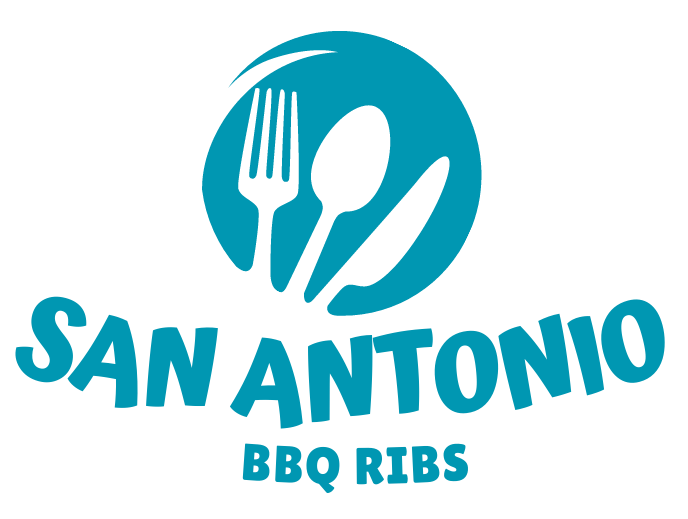How long can chicken salad stay fresh in the fridge? Several factors affect its shelf-life, like the ingredients used and storage conditions.
- If stored in an airtight container, it can last up to 3-5 days.
- Homemade mayo or dairy products have a shorter shelf life of 2-3 days.
- Pre Cooked chicken can last up to 4 days in the fridge.
- Storing it at a consistent temperature below 40°F (4°C) will make it last longer.
- Freezing it extends its shelf-life for up to three months, but may slightly alter texture or taste.
- Vomiting, diarrhoea, or an unpalatable odour mean spoilage, so discard immediately.
Food-handling practices are essential for safety. Sanitise hands, keep utensils and surfaces clean, and refrigerate quickly after serving.
How Long Can Chicken Salad Stay in he Fridge
Besides these points, individual senses like smell and sight can help determine whether chicken salad is still good to eat. If it looks and smells alright after 5 days in cold storage, it’s safe to consume.
My aunt had some chicken salad she stored for later, but forgot about it. After two weeks, she found it while remodelling her fridge and the smell was unbearable! Throwing food away is a no-no, but health experts advise against taking any chances.
In the end, fresh chicken salad is a fridge billionaire, but temperature and ingredients can quickly cause it to go broke.
Factors That Affect the Shelf Life of Chicken Salad
To maintain the freshness of your chicken salad, understanding the factors that impact its shelf life is crucial. This section focuses on the key factors such as the ingredients in the chicken salad and the temperature at which it’s stored. We’ll explore each of these subsections to provide you with effective solutions to keep your chicken salad fresh for longer.
Ingredients Used in the Chicken Salad
Ingredients in chicken salad can affect its shelf life. Get the breakdown here! Chicken Breast (2 cups cooked & shredded), Celery (1 cup diced), Grapes (1 cup sliced & seeded), and Almonds (0.5 cup roasted). Mayo, salt, and pepper are usually assumed to be included.
Fresh ingredients that are stored separately before combining will help maximise shelf life. Acidic components like lemon juice or vinegar can also improve storage time by reducing bacterial growth.
The National Institute of Food and Agriculture conducted a study. They found improper storage can lead to nasty bacteria, like Salmonella. Storing chicken salad at room temp for over two hours may increase risk of foodborne illness. Yikes!
Temperature at Which the Chicken Salad is Stored
Storage temp is key to keeping chicken salad fresh. Here’s a table showing the effect of storage temp on shelf life:
| Storage Temperature | Shelf Life |
| 40°F or below | 3-5 days |
| Above 40°F to 50°F | 2-3 days |
| Above 50°F to 60°F | 1 day |
These are general guidelines. Age and quality of ingredients may also impact shelf life.
Once opened, shelf life decreases greatly. So, consume within one to two days of opening.
In ancient times, salads were dressed with vinegar to preserve them longer. It acts as a natural preservative, inhibiting bacterial growth.
Keep chicken salad fresh and tummy fresher with these storage tips.
Tips to Properly Store Chicken Salad
To keep your chicken salad fresh for as long as possible, you need to properly store it. In order to do so, you have to pay attention to two key factors – the type of food storage containers you use and the suitable storage temperature. In this section, we’ll explore these two subsections to help you extend the shelf life of your chicken salad.
Proper Food Storage Containers for Chicken Salad
When it comes to keeping your chicken salad fresh and safe, the right food storage container is key. Here are must-know tips for Proper Food Storage Containers for Chicken Salad:
- Choose air-tight containers to stop bacteria and contaminants.
- Go with plastic or glass containers that seal tightly and keep your chicken salad fresher for longer.
- Steer clear of paper, aluminium foil, and open containers as they’re not air-tight.
- Pick containers made of HDPE, PP, or PC – these materials won’t break down at different temperatures.
- Make sure the container is an appropriate size, leaving enough space on top.
- If freezing, use freezer-safe containers that won’t crack or shatter.
Clean your Proper Food Storage Containers for Chicken Salad before and after use with hot water and soap. This will prevent bacteria buildup and keep your food safe and fresh.
Remember these tips when storing your chicken salad for maximum longevity. Investing time in prepping healthy meals is essential, so don’t be hasty when storing them. Plan ahead to avoid spoiled food and food poisoning!
Suitable Storage Temperature for Chicken Salad
The right temperature for Chicken Salad is essential for its shelf life and to stop bacteria growth. To keep the quality, a storage temperature of around 40°F (4°C) should be used.

Different stores have their own guidelines, but usually that’s the ideal temperature range. Freezing it below zero degrees Fahrenheit or heating it over 165 degrees Fahrenheit before eating are also acceptable.
If the salad was prepared with raw chicken, it should be eaten within 2 days. If the chicken was cooked then 3-5 days is the shelf life. It’s important to note that foodborne illnesses caused by bacteria in salads are not unheard of. So, it’s smart to store meat-based dishes correctly. If your salad is growing its own farm, it’s time to throw it out!
Signs that Chicken Salad has Gone Bad
To recognize when it’s time to say goodbye to your chicken salad, notice some signs that it has gone bad. This is crucial to avoid food poisoning. In order to help you keep your chicken salad fresh with sub-sections of visible changes in the chicken salad and unpleasant odour as solutions, we will discuss both sub-sections briefly.
Visible Changes in the Chicken Salad
Visible Indicators of Spoiled Chicken Salad
Chicken salad is a popular dish made with cooked, shredded chicken. It’s mixed with other ingredients such as mayo, celery, onions, and herbs. Though the flavours and textures vary, one thing is certain: there’s always a risk of spoilage. Bad chicken salad can cause foodborne illnesses and unpleasant experiences. So, it’s important to know the signs of spoiled chicken salad.
Look for changes in its appearance, texture, or smell. Here are some examples:
| Indicator | Description | Possible Causes |
| Discoloration | Chicken meat or ingredients turn yellowish, greying, or brown. | Oxidation of fats and proteins; bacteria growth. |
| Sliminess | Surface is slippery or sticky. | Bacterial or fungal contamination; excess moisture. |
| Foul Odour | Unusual smells like sour milk, ammonia, or rotting flesh. | Bacterial decomposition of proteins; toxic gases. |
These indicators aren’t exclusive to chicken salad. Other types of food have similar signs when they spoil. Visual cues may depend on the recipe or ingredients. For example, if your salad has green veg, they may wilt or darken over time. Use your judgement when assessing the food.
To reduce the risk of spoilage:
- Store the salad at a temperature below 40°F (4°C).
- Keep the ingredients clean and cooked.
- Use fresh and uncontaminated condiments.
- Don’t leave the salad at room temp for more than two hours.
- Prepare enough for 3-4 days only.
By being aware of spoiled chicken salad signs, you can enjoy this tasty dish without compromising health. The only way it could smell worse is if it was made from actual roadkill!
Unpleasant Odour
Does your chicken salad smell funny? That might be a warning sign that it has gone bad. Sour, musty, or mouldy aromas are a tell-tale sign that it’s not safe to consume. Visual inspection is also important – if it looks okay but smells weird, it’s best to throw it out.
To ensure that the chicken salad remains fresh, keep it refrigerated for no more than three days after preparation.
Remember – if you think something isn’t right with the smell, it’s best to err on the side of caution and discard it! Don’t risk eating something that could make you sick.
How to Safely Consume Leftover Chicken Salad
To safely consume leftover chicken salad, you need to know how long it can stay in the fridge. But what if you’re not ready to eat it yet? In order to keep chicken salad fresh, this section with the title ‘How to Safely Consume Leftover Chicken Salad’ with sub-sections – ‘Reheating Chicken Salad’ and ‘Discarding Leftover Chicken Salad’ has got you covered.
Reheating Chicken Salad
To keep your leftover chicken salad tasty and nutritious, here are four steps:
- Put the salad in an airtight container. For bigger amounts, divide into smaller parts for better reheating.
- Use low heat in the microwave and check frequently. Put a lid or paper towel to stop splatters. For the oven, preheat at 350°F and bake till the insides reach 165°F.
- Once done, let it cool before serving to stop bacteria growth.
- Throw out any uneaten bits after two hours at room temp or one day in the fridge.
Prevent cross-contamination by using different utensils, cutting boards, and surfaces for raw and cooked chicken. Pro Tip: Store your dressing separately until you eat, to keep the salad fresh. And, don’t forget – unless you’re a germaphobe with a great sense of humour – throwing away leftovers is no joke!

Discarding Leftover Chicken Salad
It’s essential to take caution with left-behind chicken salad to avoid any contamination and possible food borne illnesses. Here’s what you should do:
- Put the chicken salad in the refrigerator swiftly: If you don’t plan on eating the leftovers within two hours, secure it in an airtight container and refrigerate it quickly.
- Inspect for spoilage: Before discarding, look for signs of spoilage, such as an odd smell, unusual texture, or a colour change.
- Throw away suitably: Dispose of the chicken salad in sealed containers and never leave any leftover food uncovered.
- Clean your hands and surfaces: Wash your hands, utensils, countertops before and after handling the chicken salad.
Always bear in mind that leftovers should not be eaten after four days in the fridge. Furthermore, if you’re uncertain about its safety, don’t take any chances.
A recent study by the Centers for Disease Control and Prevention exposed that more than half of foodborne illness outbreaks were induced by contaminated fruits and vegetables. So, if you want to prevent getting sick, treat your chicken salad like a capricious ex and store it properly.
Conclusion: Keeping Your Chicken Salad Fresh is All About Proper Storage
Proper storage is essential for keeping your chicken salad fresh. It affects the duration of its shelf-life. Therefore, follow the right practices.
Firstly, refrigerate the chicken salad at temperatures below 40°F after you prepare or buy it. Secondly, use air-tight containers to keep out moisture.
Moreover, other factors influence the freshness. Like the dressing, ingredient quality and how often you open and close the container.
Finally, here are some tips to maintain freshness. Store in small portions to avoid contamination during serving. Use a different spoon each time you serve. Store ingredients separately and only mix them when you serve. These practices will help extend the shelf-life.
















































